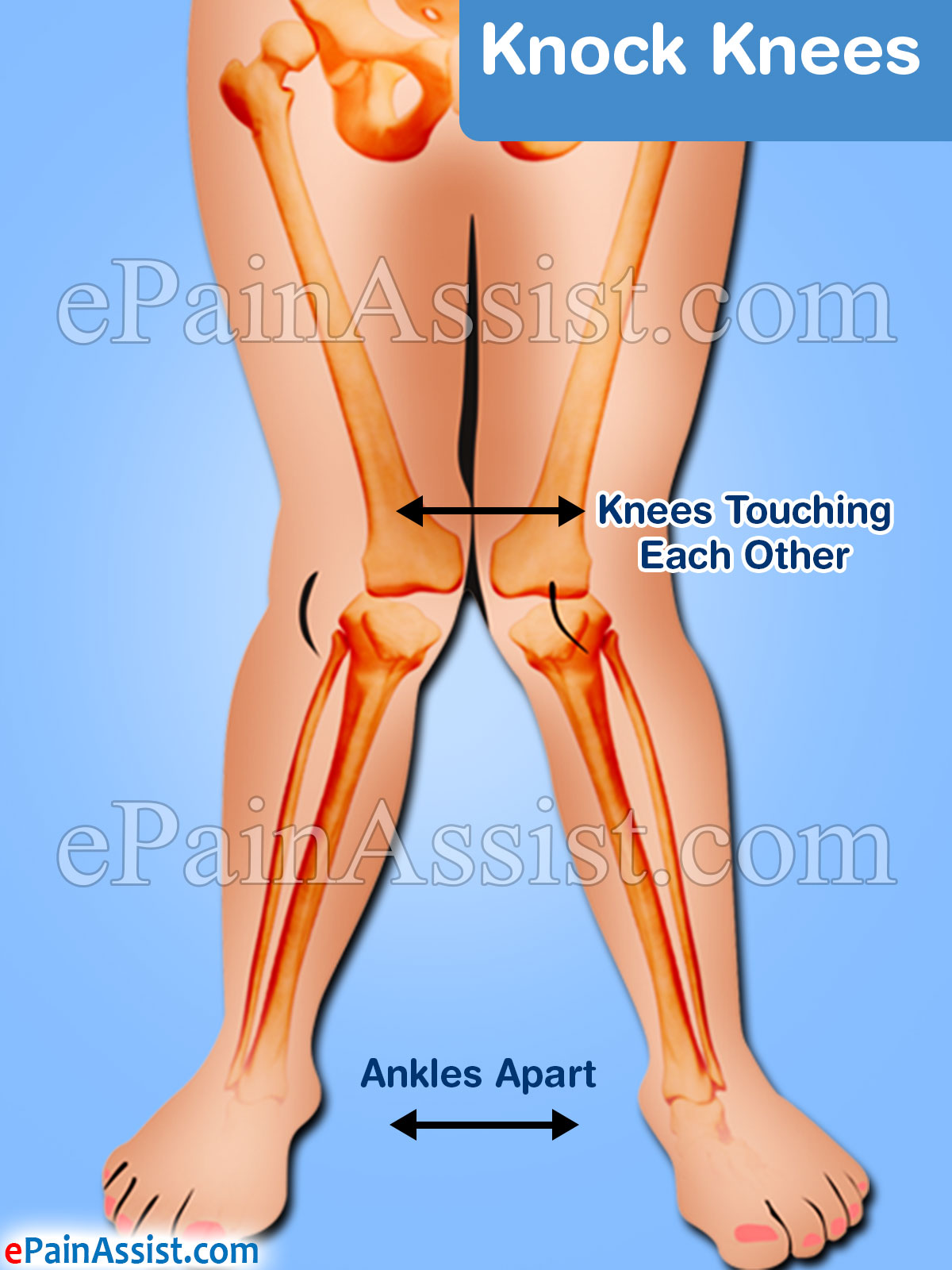Knock knees, medically termed as Genu Valgum, is a bony deformity, in which the knees, touch each other when standing, while the ankles are apart.1 Often, young children may appear as if standing in this position with legs turned inwards and is a common phenomenon. This posture is attained by toddlers, which helps them to balance when they begin to stand, walk and run in the initial years.

As the child grows to around 7 or 8 years, the position is self-corrected and a more normal equal weight-bearing posture is adopted. The child learns to balance by placing the feet properly on the ground and the knees no longer turn inwards or knock.
However, if the occurrence of knee valgus continues even after the child grows or appears later, it may need medical evaluation.
What Can Cause Knock Knees or Genu Valgum?
Knock knees are normal in young children but if the problem persists or appears later in life, there may be an underlying medical cause.
Some of the causes that can contribute to knock knees include
- Medical conditions resulting from nutritional deficiencies like rickets, osteomalacia or scurvy can affect the formation of bones and cause knocking of knees.2
- Bone infection like osteomyelitis can causes deformity of knees.
- Injury to the shin bone, which is responsible for growth, can cause knock knee. This may be present only in only one leg.
- Certain rare genetic conditions may be a cause of such bony deformities.
- Adults may show knock knees or genu valgum due to a previous injury or a joint condition like osteoarthritis or rheumatoid arthritis.
- Obesity can lead to gait changes, which can make it appear like knocked knees.
What Are The Symptoms of Knock Knees?
Knock knees are a normal part of development and may not cause any symptoms. However, if they persist beyond a particular age, they may cause discomfort and pain in the legs.
If knocked knees is due to a medical cause and results in deformity, there may be difficulty in walking. Pain and resultant changes in gait, awkward walking may be noticed. Changes in normal posture may also affect other joints and cause pain and difficulty in movement.
How Is Knock Knees or Genu Valgum Diagnosed?
When knock knees is suspected to be an abnormality, clinical examination is essential. Observations of standing and walking pattern, measurements of the knee and ankle angles are taken.
Knocked Knee or Genu Valgum can be confirmed by measuring the body height, alignment of legs and feet, symmetry of knees and gait or walking pattern. Imaging studies like X-rays may be ordered if appropriate.3
How To Fix Knock Knees or Genu Valgum?
As knock knees also occur naturally in growing children, observation during early years is suggested. If Knocked Knee or Genu Valgum persists and does not correct itself, certain treatment modalities and corrective measures may be suggested.
Knock knees may be corrected by treating the underlying cause. Nutritional disorders, joint conditions or other medical problems, if any, need to be treated appropriately. Supplementation of Vitamin D, vitamin C and other vitamins and minerals is considered.
Knock Knee Braces – Special shoes, night braces or orthoses may be advised to support proper angulation of knees and ankles. Braces help in maintaining the angle of the knees and prevent knocking thus promoting proper growth and posture when walking or running.
Exercises to Correct Knock Knee
Knock Knee or Genu Valgum of mild degree can be corrected by strengthening exercises, which help to realign and stabilize the knees. Perform these exercises in 10 repetitions for each leg and gradually with weights.
Corrective Exercise for Knock Knee #1: Straight Leg Raises – For muscles in front of thigh.
- Sit on a chair with feet touching the floor. Straighten one leg by raising it, hold and then release.
- Lie on the back. Raise one leg at a time with knees straight, hold and bring it down.
Corrective Exercise for Knock Knee #2: Knee Bends – For muscles at the back of thigh.
- Stand and bend one leg from behind and try to touch the feet to the hips.
- Perform the same exercise when lying down on stomach.
Further half squats, step-ups, therapeutic ball and pool exercises also help and should be performed under the guidance of an expert.
Surgery to Correct Knock Knees
In severe forms of knock knees that persist till adulthood or when there is an underlying medical problem, surgical correction of Genu Valgum may be considered.
Corrective surgery for Knock Knees or Genu Valgum includes
- Guided growth, in which a small plate is placed in the knee to correct the growth of the knees. This is performed in growing children during their teens.
- Another procedure called osteotomy, may be considered. In this the leg bone is operated and realigned to promote correction of the angle at knee and equal weight bearing.
Surgical correction for Knock Knee or Genu Valgum often offers good results and is followed by physiotherapy. Medical advice regarding post-surgical care, use of splint and other measures should be followed. Knee mobilization, strengthening and balancing exercises, training for correct standing, walking and weight bearing postures is done for effective healing and recovery.
Also Read:
